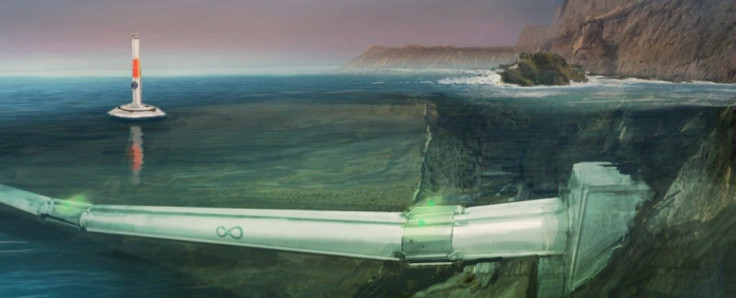Hyperloop One to offer ultra-fast trains underwater
Hyperloop One has capacity to provide underwater transport but costs need to be reduced.
If the idea of super-fast trains did not seem exciting enough, one of the two startups working on Hyperloop says it would actually be possible to make the technology work underwater too.
The Hyperloop system is a concept proposed by technology entrepreneur Elon Musk, equipping trains to travel at supersonic speeds up to 800mph (1,300km/h) using reduced pressure tubes. Pressurised capsule pods (the train carriages) ride on an air cushion in steel tubes driven by linear induction motors and air compressors, which allows them to go faster than current trains.
"The DNA of my time at SpaceX has got its fingerprints all over Hyperloop. There's nothing new that has to be invented, but (what) we are doing is innovating and doing things to bring the cost down," Hyperloop One's CTO Brogan BamBrogan told tech site Futurism.
"We think we can deliver things people don't even know they want yet, and that's going to manifest itself in a lot of ways. So I think we will see some above-grade systems, we're definitely going to see tunnelled systems, and we also want to see some underwater systems."
Hyperloop One, a startup founded by people who back or have previously worked for tech entrepreneur Elon Musk, is currently trying to develop a superfast route between Los Angeles and Las Vegas with a team of over 100 engineers working on the technology.
The startup has so far raised over $35m (£24m) in working capital and its design involves using air bearings to create an air cushion, similar to the way an air hockey puck floats, except that propulsion comes from jets of air being expelled from the puck.

In order to generate the air, the capsule pod travels through the tube at a high speed to generate the air needed, while at the same time an electric air compressor in the front of the capsule pumps air to the back of the capsule.
Hyperloop One is pushing ahead with tests on its design, and in May was able to demonstrate that a lightweight aluminium sled could travel 100mph in just 2 seconds on a 1.9-mile-long test track in the Nevada Desert during its first public high speed propulsion test.
The firm currently has one rival competing against it – Hyperloop Transportation Technologies, a startup made up of 500 part-time engineers across the US that has licensed a technology called passive magnetic levitation.
The technology involves magnets arranged in a special pattern underneath the train cars to produce a strong electromagnetic field that is repelled from the magnets embedded in the train track to move.
© Copyright IBTimes 2025. All rights reserved.






















